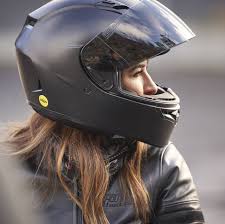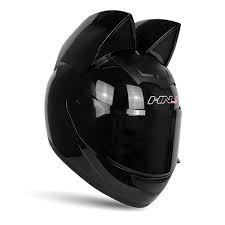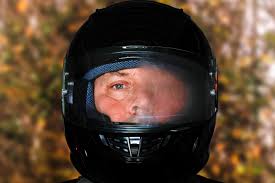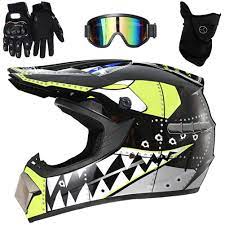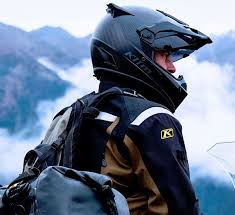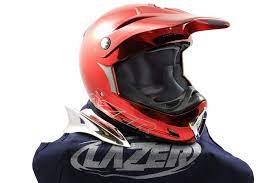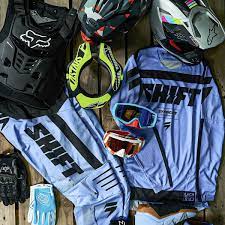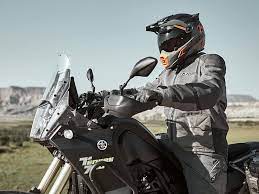Top Picks: Best Full Face Helmet for Harley Riders in the UK
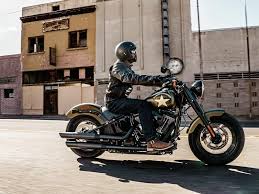
The Best Full Face Helmet for Harley Riders
When it comes to riding a Harley, safety should always be a top priority. One essential piece of protective gear that every Harley rider should invest in is a high-quality full face helmet. Not only does it provide protection in case of accidents, but it also shields you from wind, debris, and noise while riding.
Here are some top picks for the best full face helmets for Harley riders:
Shoei RF-SR Helmet
The Shoei RF-SR helmet is known for its premium quality and comfort. It offers excellent ventilation, a snug fit, and superior impact protection. With its sleek design and advanced features, this helmet is a popular choice among Harley enthusiasts.
Bell Qualifier DLX Helmet
The Bell Qualifier DLX helmet combines style and safety with its aerodynamic design and advanced safety features. It features a Transitions shield that adapts to changing light conditions, making it ideal for long rides on your Harley.
Arai Defiant-X Helmet
The Arai Defiant-X helmet is favoured by many Harley riders for its exceptional build quality and comfort. It offers superior protection against impacts and features a unique ventilation system to keep you cool and comfortable on hot days.
These are just a few examples of the best full face helmets available for Harley riders. Remember to choose a helmet that fits well, meets safety standards, and suits your riding style to ensure maximum protection on the road.
Top 6 Tips for Choosing the Best Full Face Helmet for Harley Riders
- Look for a full face helmet with a classic and stylish design to complement your Harley’s aesthetic.
- Ensure the helmet provides excellent ventilation to keep you cool and comfortable during long rides.
- Opt for a helmet with advanced safety features such as impact-absorbing materials and a secure chin strap.
- Choose a helmet with a visor or face shield that offers UV protection and helps reduce wind noise.
- Check the helmet’s fit by trying it on before purchasing to ensure it is snug but not too tight.
- Consider additional features like Bluetooth connectivity or compatibility with communication systems for added convenience.
Look for a full face helmet with a classic and stylish design to complement your Harley’s aesthetic.
When selecting the best full face helmet for Harley riders, it is advisable to seek out a design that not only prioritises safety and functionality but also complements the classic and stylish aesthetic of your Harley. Opting for a helmet with a timeless and sleek design can enhance the overall look and feel of your ride, ensuring that you not only stay protected on the road but also exude a sense of style that resonates with the iconic Harley brand. By choosing a full face helmet that aligns with your Harley’s aesthetic, you can ride confidently while making a statement with your gear.
Ensure the helmet provides excellent ventilation to keep you cool and comfortable during long rides.
When selecting the best full face helmet for Harley riders, it is crucial to prioritise helmets that offer excellent ventilation to ensure optimal comfort during extended rides. Adequate ventilation not only helps in regulating temperature and preventing overheating but also enhances overall riding experience by keeping you cool and refreshed throughout your journey. Opting for a helmet with superior ventilation features can make a significant difference in maintaining comfort and focus while enjoying the open road on your Harley.
Opt for a helmet with advanced safety features such as impact-absorbing materials and a secure chin strap.
When selecting the best full face helmet for Harley riders, it is crucial to opt for a helmet that prioritises safety. Look for advanced safety features such as impact-absorbing materials and a secure chin strap. These elements play a vital role in providing maximum protection in case of accidents or collisions. Investing in a helmet with these safety features ensures that you can ride confidently knowing that you have taken the necessary precautions to safeguard yourself on the road.
Choose a helmet with a visor or face shield that offers UV protection and helps reduce wind noise.
When selecting the best full face helmet for Harley riders, it is essential to opt for a helmet with a visor or face shield that provides UV protection and aids in minimizing wind noise. A visor or face shield with UV protection not only shields your eyes from harmful sun rays but also enhances visibility and reduces glare while riding. Additionally, the feature helps to maintain clear vision in varying light conditions. Furthermore, a shield designed to reduce wind noise can significantly improve the overall riding experience by decreasing distractions and ensuring a more comfortable journey on your Harley.
Check the helmet’s fit by trying it on before purchasing to ensure it is snug but not too tight.
Before purchasing a full face helmet for your Harley riding adventures, it is crucial to check the helmet’s fit by trying it on. A proper fit is essential for both comfort and safety while on the road. The helmet should feel snug on your head without being too tight, ensuring that it stays in place during rides without causing discomfort. Taking the time to try on different helmets and finding the perfect fit will not only enhance your riding experience but also provide you with the necessary protection needed for a safe and enjoyable journey.
Consider additional features like Bluetooth connectivity or compatibility with communication systems for added convenience.
When selecting the best full face helmet for Harley riders, it is essential to consider additional features such as Bluetooth connectivity or compatibility with communication systems. These added features can enhance your riding experience by providing convenience and connectivity while on the road. With Bluetooth connectivity, you can easily listen to music, take calls hands-free, or communicate with fellow riders without having to stop or remove your helmet. Choosing a helmet with these modern features can make your rides more enjoyable and seamless, adding an extra layer of functionality to your gear.

